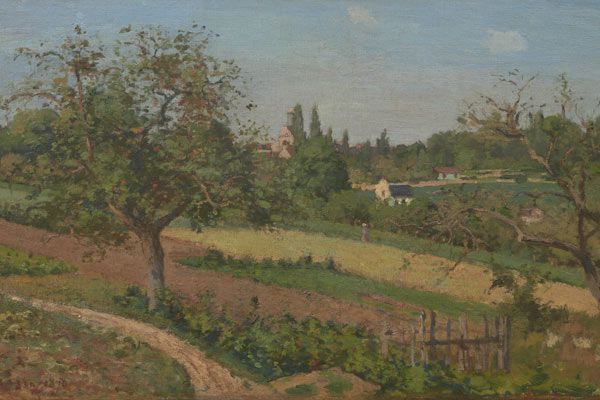
The Ashmolean pays tribute to Pissarro, the father of Impressionism
Camille Pissarro - Louveciennes - 1870Camille Pissarro - Self-Portrait - 1896
From 18 February to 12 June 2022, the Ashmolean Museum, Oxford, is presenting one of the largest retrospectives ever devoted to Camille Pissarro, one of the first Impressionists.
Images: Camille Pissarro, "Field near Louveciennes, Summer" (1870, private collection) ·· Camille Pissarro, "Self-Portrait" (1896, Dallas Museum of Art)
That is why, perhaps, all of us derive Pissarro. He had the good luck to be born in the West Indies, where he learned how to draw without a teacher (…) “Never paint with anything but the three primary colours and their derivatives”, he used to say me. Yes, Pissarro was the first ImpressionistPaul Cézanne
The study of the origins of Impressionism is complex and open to numerous interpretations. Several names, from Camille Corot to Edouard Manet -and even artists belonging to much earlier periods and styles, such as John Constable and Frans Hals- have been proposed, with greater or lesser rigour, as possible "origins" of Impressionist painting. However, the full Impressionist style did not develop until the late 1860s, when two figures are essential to understanding the genesis of Impressionism. One of them is Claude Monet, who in 1867 painted "Terrasse à Sainte-Adresse", in which he took a further step in the Impressionist technique in the open air sketched by Manet in his "Le déjeuner sur l'herbe" of 1863. The other great figure is Camille Pissarro, who in that same year painted "La colline de Jalais, Pontoise", in which the influence of Corot is appreciable behind his almost fully Impressionist technique. Tragically, most of the canvases painted by Pissarro before the 1870s were destroyed during the Franco-Prussian War of 1870-71, during which the artist was forced to flee to London.
Presenting some 120 works, including 80 by Pissarro, the Ashmolean Museum exhibition presents Pissarro as "the father of Impressionism", pointing out how -despite his fundamental importance in the development of the movement, and despite being the only artist to exhibit in all eight "Impressionist Exhibitions"- his fame is nowadays less than that of other artists such as Cézanne, Degas, Gauguin or the aforementioned Claude Monet. The exhibition includes works from all the artist's periods, from his early paintings in full Impressionist style ("Field near Louveciennes, Summer", 1870, shown for the first time in the UK) to his neo-Impressionist experiments influenced by Georges Seurat's Pointillism, as well as works by other artists who worked alongside Pissarro, such as Paul Cézanne ("La Vallée de l'Oise", c.1880).
"Camille Pissarro is unique among the Impressionists," explains Colin Harrison, curator of the exhibition. "Unlike his contemporaries, he never compromised for the market; he was willing to learn and experiment; but was always devoted to painting the ‘sensation’. Consequently he is the most sincere and authentic of all the Impressionists and his influence on his own and succeeding generations of artists is impossible to quantify."
Read the full article

